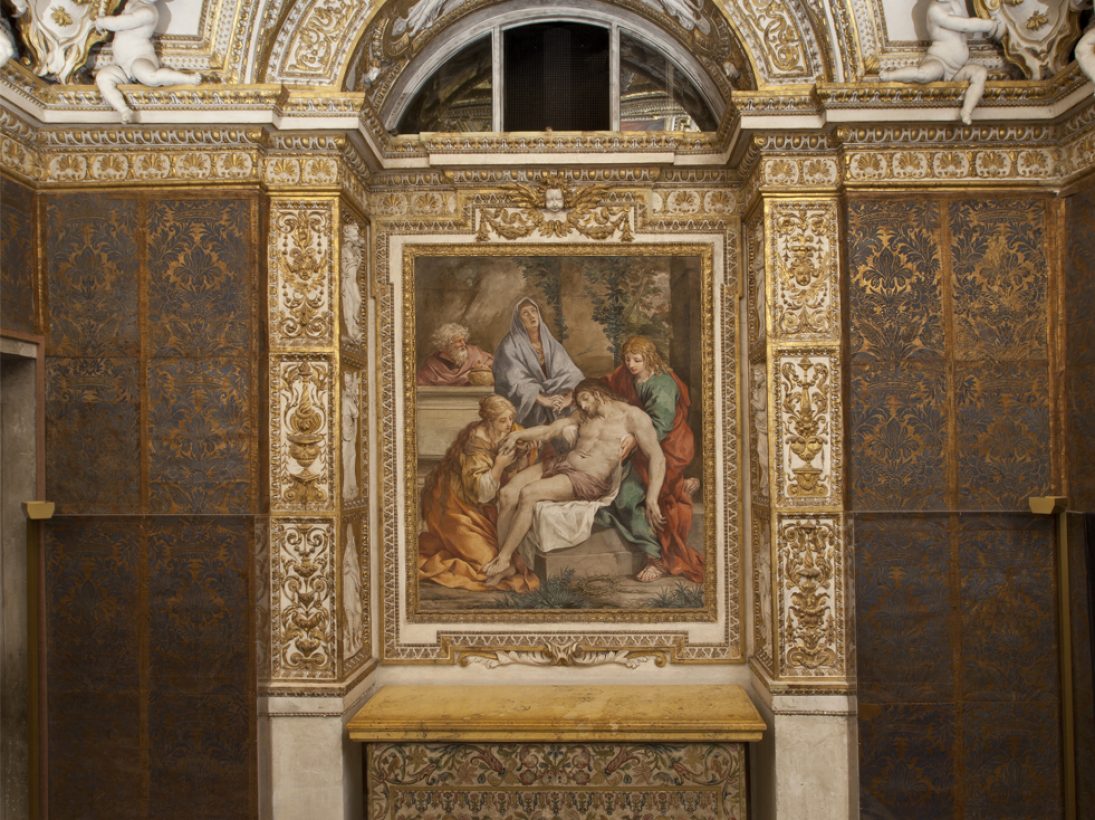Chapel of Urban VIII
Chapel of Urban VIII
The Chapel came into being in 1631 when the pontifical architects, upon request by Pope Urban VIII Barberini, adapted a small room of 5 by 4.4 metres for liturgical functions, surmounting it with a vault with lunettes and decorating it with ornate gilded stucco.
In the south-west corner of the Borgia Tower, next to the Room of the Fire in the Borgo, this small space become the private chapel of the "old apartment", corresponding to the Rooms decorated by Raphael and used by the pontiffs for almost the entire sixteenth century as a papal residence.
The frescoes depict the Stories of the Passion of Christ. In the lunettes there are scenes of the Flagellation, the Crowning with Thorns, and Christ's Meeting with Veronica, while on the vault, the central rectangular space there is Christ in the Garden is surrounded by small angels with the instruments of the Passion. The pictorial decoration was entrusted to the Florentine painter Alessandro Vaiani, who began the work shortly before his death, probably assisted by his daughter Anna Maria.
The frescoed altarpiece depicting a Pietà with the Madonna, St. John, St. Mary Magdalene and Nicodemus was instead produced some years later in 1635 by Pietro da Cortona. The original appearance of the walls is unknown; they are now decorated with stamped leather from the Vatican Apostolic Palace and mounted in the chapel, probably during the second half of the nineteenth century. A valuable decorative element in wealthy and noble dwellings, the antique leather wall coverings were made of goat, sheep or calf skins specifically treated with vegetable elements and subsequently with silver or tin leaf. The unique gilded appearance typical of such items was obtained by applying transparent paints based on linseed oil and mixed resins of aloe and saffron, yellowish in colour, across the entire surface, which made the most of the luminosity of the metal leaf, thus simulating the effect of gold.



